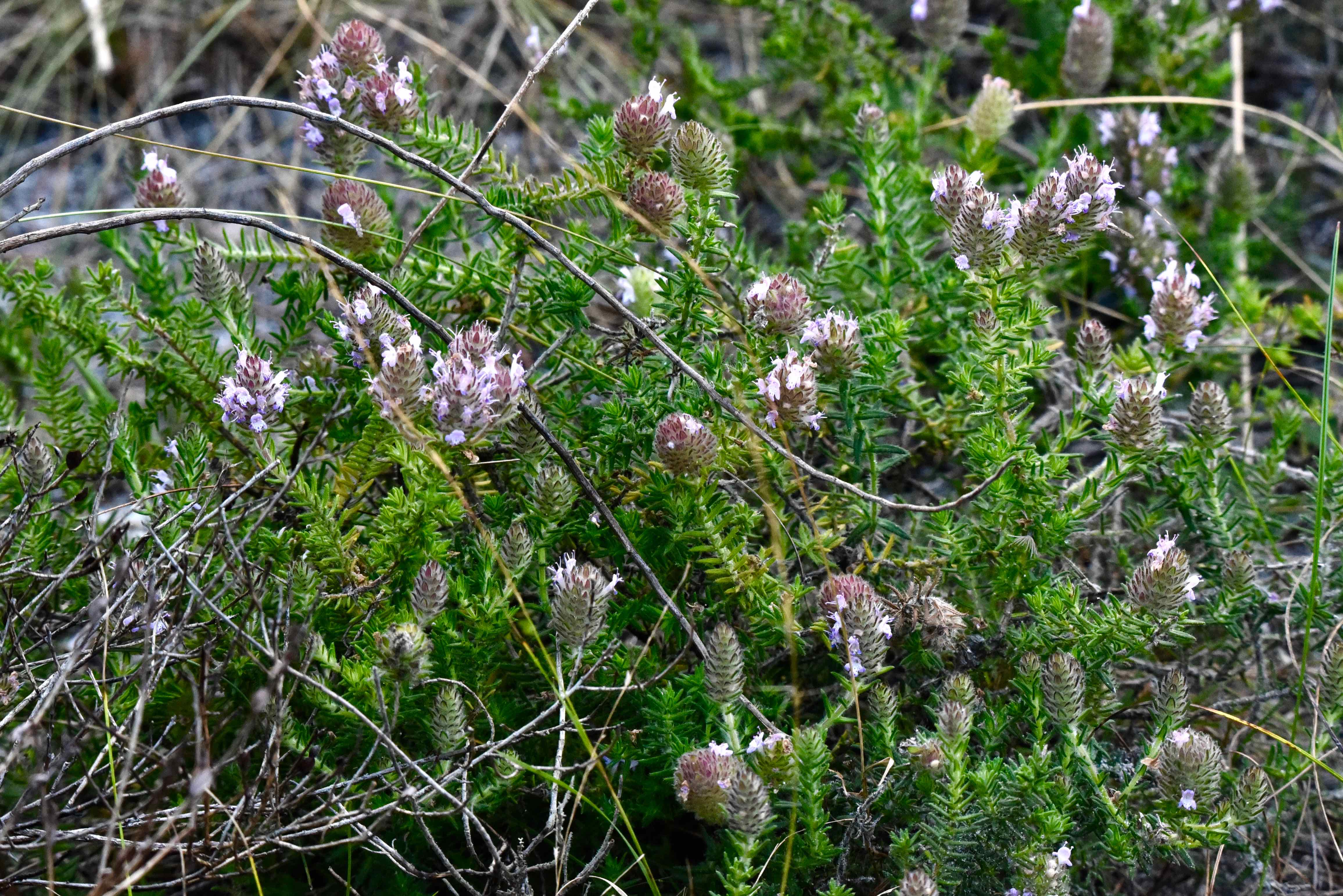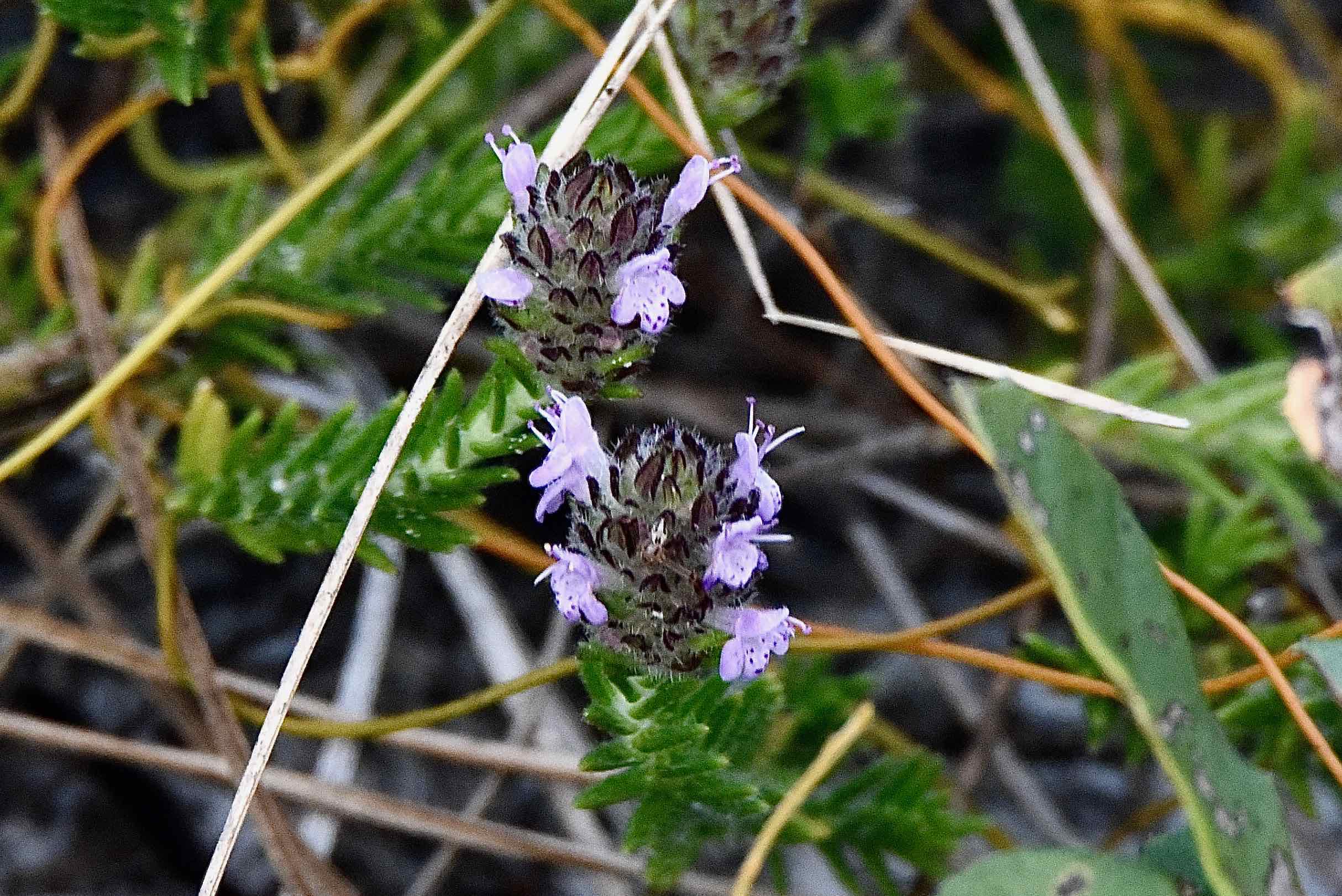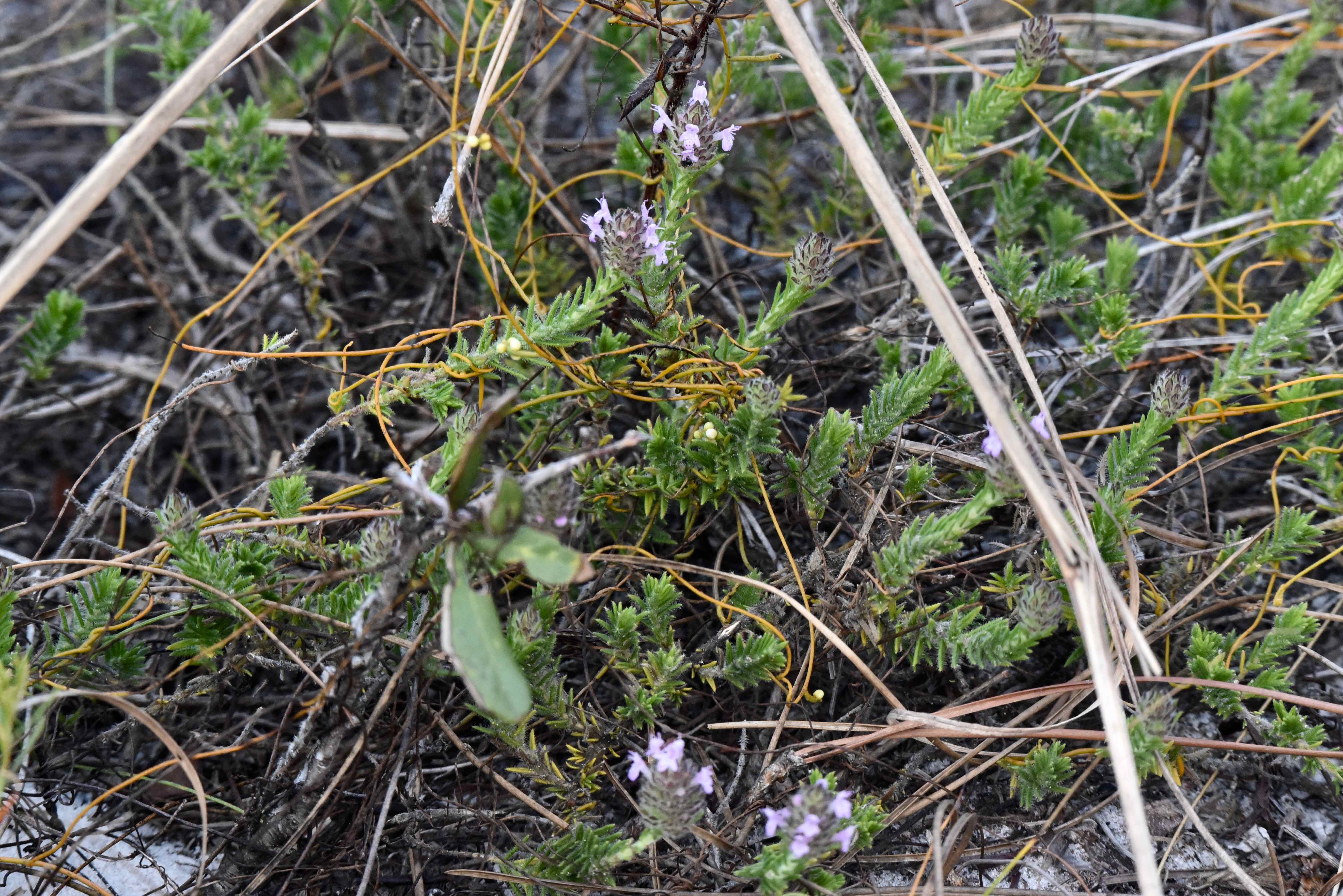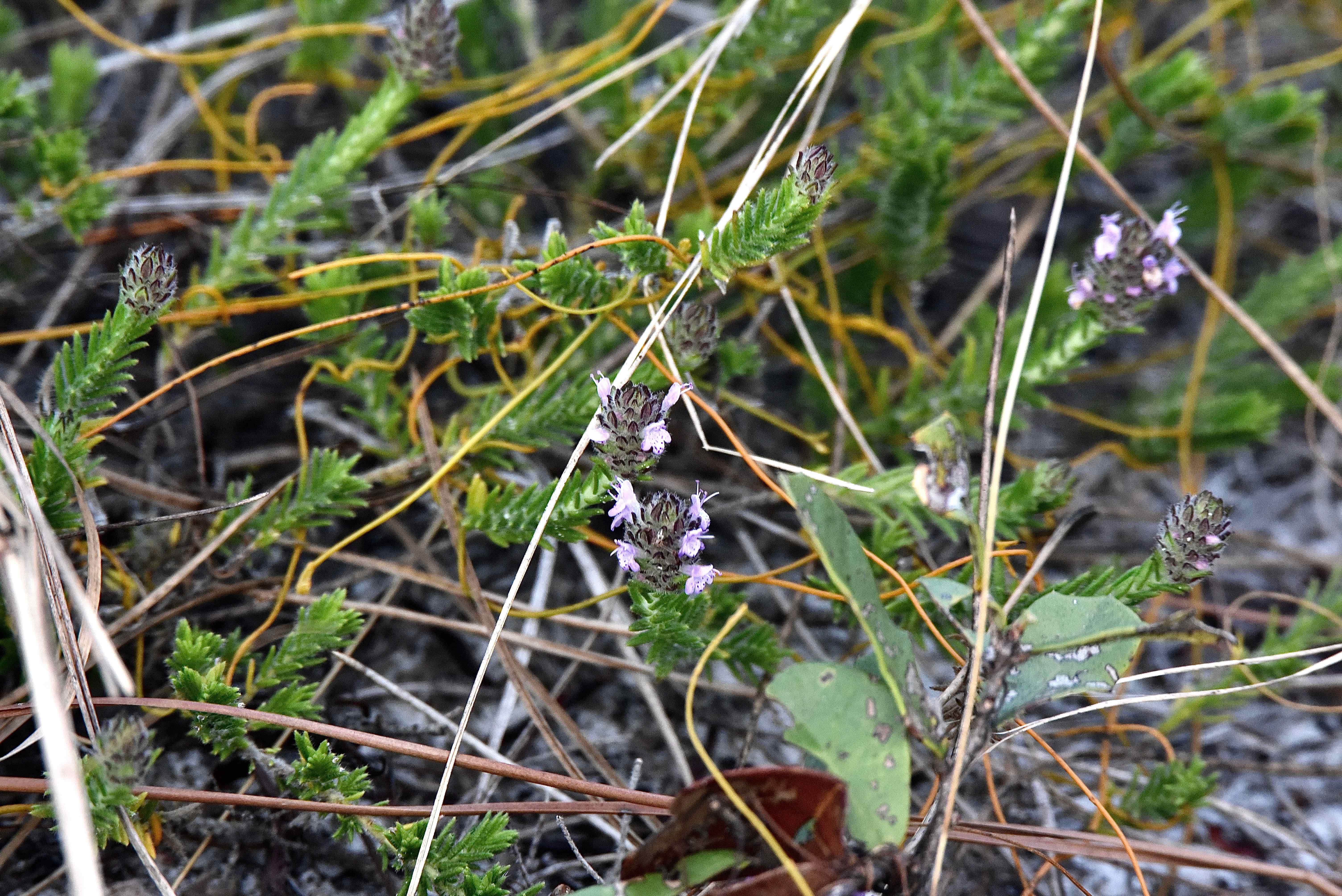
Wild pennyroyal, photographed at Jonathan Dickinson State Park, Hobe Sound, Martin County, in January 2019.
Wild pennyroyal has to have one of the strangest scientific names in the plant kingdom: Piloblephis rigida. Which sounds ok until you translate it into English and it becomes rigid hairy eyelid. We did not make this up.
It's a Florida native, but a rare one here in South Florida. Its range extends throughout most of the Peninsula, into a few counties in Georgia and a few islands in the northern Bahamas. The one place in South Florida where it's not found: Monroe County.
Wild pennyroyal is a wild mint, found in pinelands, sandhills and open woods. It is a perennial, with short, needle-like leaves. The flowers are small but clustered for effect. Each has five lips, two on top, three on the bottom, with purple spots on the bottom lips. The strange scientific name comes from hair-like structures on the outer parts of the flowers called the sepals. The hairs give the flower heads a fuzzy appearance, and are best seen in the photo at the bottom left. The rigid part comes from the stiff stems and branches.
Wild pennyroyal blooms year round but most prominently fall through winter. It's an important source of nectar for bees and other insects because it's blooming at a time when few other plants are. It can be a ground hugger or grow to a couple feet tall, but we've mainly seen it as a ground hugger. The needle-like leaves are arranged opposite each other on the stem.
One quick note: wild pennyroyal is not actually a pennyroyal, nor is it related to pennyroyals; in fact it's also called false pennyroyal. But if you Google wild pennyroyal you will get hits for the real thing, so check for "Piloblephis rigida " or use it as your search term to ensure getting the right plant.
For the Seminoles, wild pennyroyal was food, medicine and pesticide. Seminoles would gather the leaves of the plant, dry them and use them to make tea and flavor soups. A variety of sources, including plant expert Roger Hammer, say the tea, made with sweetened water, is quite refreshing.
The Seminoles used various parts of wild pennyroyal both internally and externally. They would use the roots to treat leg sores and ulcers. They would use everything but the roots to treat something they called hog sickness (the Seminoles named diseases after animals) and to revive the unconscious — a sort of herbal smelling salts. They would treat colds and fevers with it and use it as a tonic for chronically ill babies.
But perhaps one of its more interesting uses was as an insecticide, or rather as an insect repellent. The Seminoles would place sprigs of wild pennyroyal in the bedding of their dogs to repel fleas. As it turns out, the oils in wild pennyroyal do effectively keep the bugs at bay, but there are two problems for anyone thinking of commercializing it. The first is how rare wild pennyroyal is; the second is the plant doesn't consistently produce the desired oils.
On the other hand, wild pennyroyal is commercially grown for use in landscaping — in restorations, wild flower and butterfly gardens and as a border planting. It grows from seed and it is commonly propagated, or reproduced from cuttings, but it is difficult to transplant. It prefers full sun, sandy soils and has a high tolerance for drought.
Wild pennyroyal is a member of the mint family, Lamiaceae. It is the sole member of its genus, Piloblephis. Other common names: pineland pennyroyal and Florida pennyroyal.
Click on photo for larger image
Links for Wild Pennyroyal



